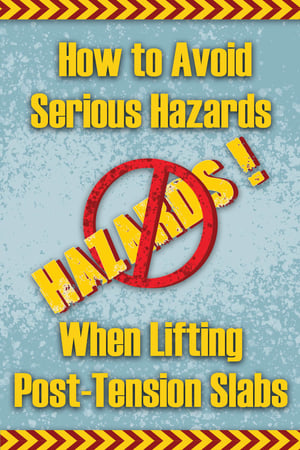

I recently provided on-site technical support on a job with Foundation Repair of Western Colorado. A post-tension residential slab had some interior settlement issues. (Post-tension slabs are constructed with embedded high-strength cables that keep them from cracking or moving.) It looked like the settlement was due to an issue with the cables, either a faulty installation or failure to properly stretch them after the install.
Are Post-Tension Slabs Dangerous?
When working on a slab containing post-tension support cables, you must be extremely careful. These cables are typically stressed to greater than 30,000 lbs tension. If you accidentally drill through or cut a tensioned cable, it can likely rip out of the concrete with a sudden whip-like motion. Consequences could include slab destruction, equipment damage, serious injury, or even death. A few years ago, I witnessed a geotechnical engineer accidentally cut a post-tension support cable when drilling through a slab for a soil boring sample. We were inside a building. The cable snapped with a sound like a massive gunshot. It shot out from the exterior of the foundation wall. Fortunately, no one was standing near that area at the time. Nor was there any valuable equipment nearby. However, serious damage was done to the slab.
How to Repair Post-Tension Slabs
While consulting on this job with Foundation Repair of Western Colorado, we used ground penetrating radar to locate the post-tension cables before doing any drilling. The crew then marked the “no-drill” areas and was able to safely drill through the slab for polyurethane injection. In addition to locating the post-tension cables, we used the GPR system to locate rebar within the slab and check for underground utility lines.
Ground Penetrating Radar uses radar pulses to image the subsurface. It is a non-intrusive method of surveying the sub-surface to locate underground utilities such as electrical conduit, plumbing, duct work, cables or masonry. GPR can also often identify the location of voids under the slab, providing helpful information in the injection process.
This slab lifting job went very well. The crew used AP Lift 430 to level the slab. The settlement was remedied, and the customer was very happy with the results.


